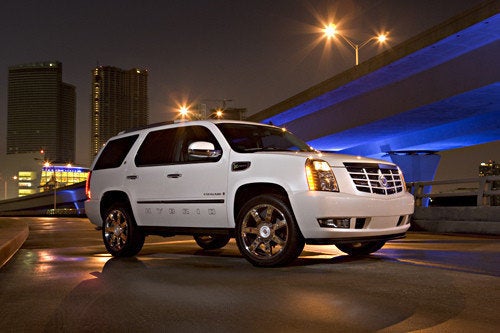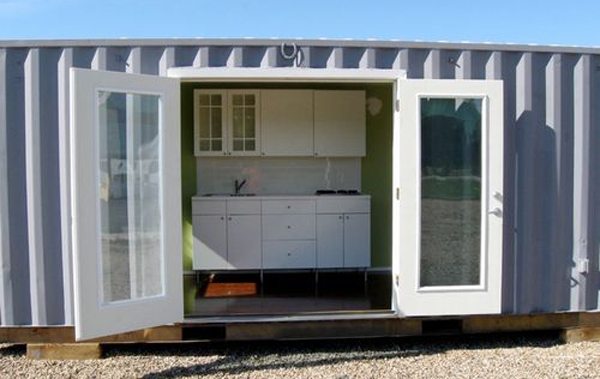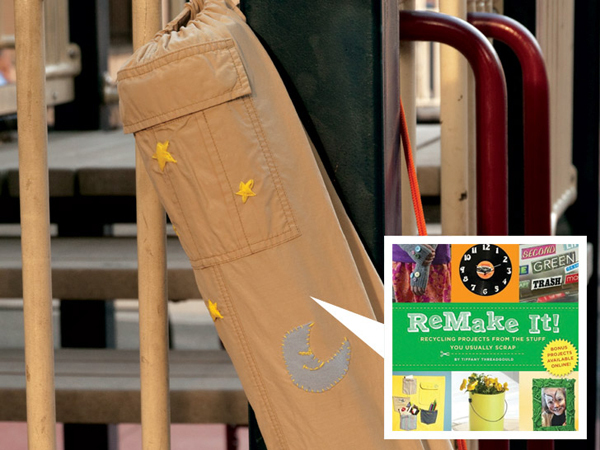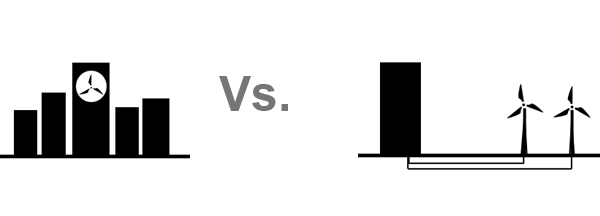
Can green design be dumb design? The answer is sometimes, and that's not necessarily a bad thing. If our most creative people were only trying rational progressive ideas that always deliver on their green promises, I would think that collectively we weren't reaching far enough. If clever ideas that are executed with ecological sensitivity are referred to as "smart design", then the opposite should also apply. We should celebrate the designers' intentions and not overstate their minimal impact.
I was originally going to title this article "the five dumbest green design trends" but then I remembered that I am in no position to judge such things as I once designed a zero energy home full of green technologies that just happened to be a vacation home more than 6000 square feet in size. It was as green as a Hybrid Escalade, which is to say, not that green at all.
So, instead of telling you which green design trends are dumb, I will offer up a few nominees for you to judge. Feel free to post your own ideas or examples in the comment section below.
Green Gadgets:
Creativity comes in different sizes, but when we are discussing things as globally important as climate change and sustainable design, is it worth including green accessories for our smart phones? I love inhabitat.com as much as the next tree-hugger, but their post on the Top 5 Green Gadgets for Guys was a bit of a stretch.
Let's look at a few of them:
First, the eco-drive citizen watch. Now I must have missed the story about how discarded watches were filling up landfills or how the gratuitous usage of electricity packaged into batteries the size of nickels was a significant cause of climate change. I do know, however, that my cell phone can keep time so unless this watch can do some really slick James Bond stuff, it provides a redundant function. "But, wait!" you say. "This watch has a cloth band, which could be made from hemp or bamboo fibers which sequester carbon while performing the function of structural support." I would suggest a friendship bracelet as a nice alternative.
The Hybrid Bike by Derringer Cycles is a sort of skinny motorcycle bike hybrid that is less green than a real bike but more manly than a Vespa. Not a terrible product, but the person riding it would certainly achieve "that guy" status, which, to be fair, is probably the goal of most guys who desire green gadgets.
The Sakku Solar Powered Traveler Bag is actually kind of a cool thing for the nomadic urban hipster who thinks that even the smallest electric loads should be satiated with renewable energy. At 500 bucks for the battery-powered version, it is a pricey gadget which could be useful to those who need to charge mobile devices on the go if the charge capacity of the battery and the output of the solar panel are adequate. As for whether it helps us take a step towards carbon neutrality, I doubt that the typical usage would save enough grid energy to justify its embodied energy and price.
Accessories for Green Gadgets:
Associating iPhone cases with sustainability is as silly as associating French fries with freedom. Think about the same issues and arguments outlined above, but consider whether to judge the designers of the accessories more harshly than the designers of devices that need accessories.
Recycling something usable into something less so:
Why are people recycling perfectly good shipping containers into narrow houses with low ceilings? If new shipping containers are still being produced and steel has a higher embodied energy than traditional home construction methods, then wouldn't it make more sense to just keep using them as shipping containers? When used as a house, some of the metal will need to be cut out for windows and doors. When used as non-moving parts in low-rise construction, they offer way more structural strength than is needed, making them an inefficient use of steel. They need to be painted often or the metal will corrode, problematic if you were counting on it as the structure. If you add even a modest amount of insulation, then the tight spaces become even tighter.
On the DIY front, this trend is exemplified by this genius idea of turning pants into yoga mat cases; however, this idea is environmentally redeemable if you need two yoga mat cases and a new pair of daisy dukes.
Windmills on buildings:
Powering buildings with renewable energy is a good thing, but before we start shaping skyscrapers to funnel wind into turbines, let's think about what this physical integration actually achieves. The reason we don't have more renewable energy production in America has to do more with cost and capital than with space. Rather than giving up valuable square footage in a dense urban setting, wouldn't it make more sense to use the revenue gained by the building's primary function to install more windmills in a cheaper location outside of the city? Using renewable energy technologies in non-cost optimal but highly visible ways could be more about a desire to demonstrate political correctness than about a desire to have a positive impact on the environment.
Making parts of ridiculously wasteful and totally unnecessary practices bio degradable.
Green golf balls allow you to feel less guilty when you are participating in an elitist sport that wastes hundreds of thousands of acres of land.
Green Science Fiction
There can be value in speculative design that doesn't fully embrace all the constraints of the real world. The entries in the eVolo 2011 Skyscraper Competition exhibits exceptional architectural media with sustainable aspirations. When it comes to dealing with reality they are more James Cameron than Cameron Sinclair.
Collaging together progressive technologies into visually compelling eco-utopian fantasies that in no way reflect the cultural and economic challenges of integrating such technologies into our actual society is graphic design not sustainable design. Design is about communicating a vision in a way that allows it to exist. The lack of visualization is not the key factor that is preventing the widespread integration of renewable energy technologies. We should challenge our designers to collaborate with other disciplines so that the vision goes beyond pixels and includes arguments that address a broad range of social and economic constraints.
People from first world countries making "sustainable designs" for people in third world countries:
Providing aid in the form of design and construction is a good and noble thing. I applaud wonderful organizations like Architecture for Humanity for developing networks that provide humanitarian assistance; however, it is important not to confuse humanitarian aid with sustainable design even if that aid comes with solar panels. They often, but not always coexist, in the same projects. When it comes to sustainable design and reducing our ecological footprint is it a good idea for people from the countries that consume the most to educate those who consume much less? The knowledge transfer should exist in both directions. We should provide aid to those in need but remember that some of the biggest messes are in our own cultural backyard.
As a designer who aspires to make things greener, I have been guilty of all the potential conceptual flaws I listed. This post is meant to provoke a good-natured discussion that goes beyond good intentions. It should be no surprise that designers occasionally prioritize 'coolness' over functionality, but let's not congratulate ourselves too much when we do. Our trifling obsessions with the details that others overlook give us a unique place in the world, but let's be careful when we use slogans like "green design can save the world." Hipster-friendly green gadgets that allow us to wear our tree-hugging hearts on our organic cotton flannel sleeves will not save us.
Designers can't force consumers to change their behavior; we can only entice them. Imperfect incremental progress is better than no progress, but let's not mistake what is cool for what is impactful. Celebrate concepts like green bling and eco-luxury if you must but let's not substitute true environmental reform with a stylistic interpretation of green. We should be beyond the point where designers are creating opportunities for consumers to symbolically express their interest in being green. We need to focus on the opportunities that create real impact not techno-centric media attention. Now, I have to go figure out how to convince my clients that small durable homes in pedestrian-friendly neighborhoods are more desirable than a big ones with solar panels and bamboo floors.
So, share your own flawed green design stories in the comment sections below, but please try to keep things good-natured.


